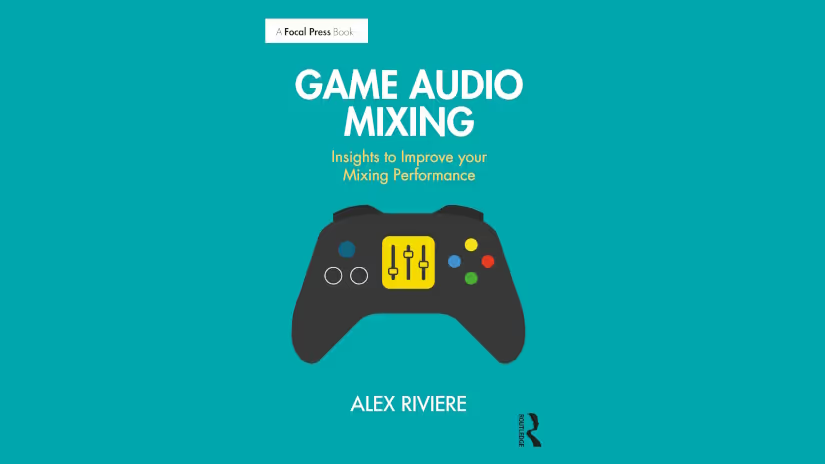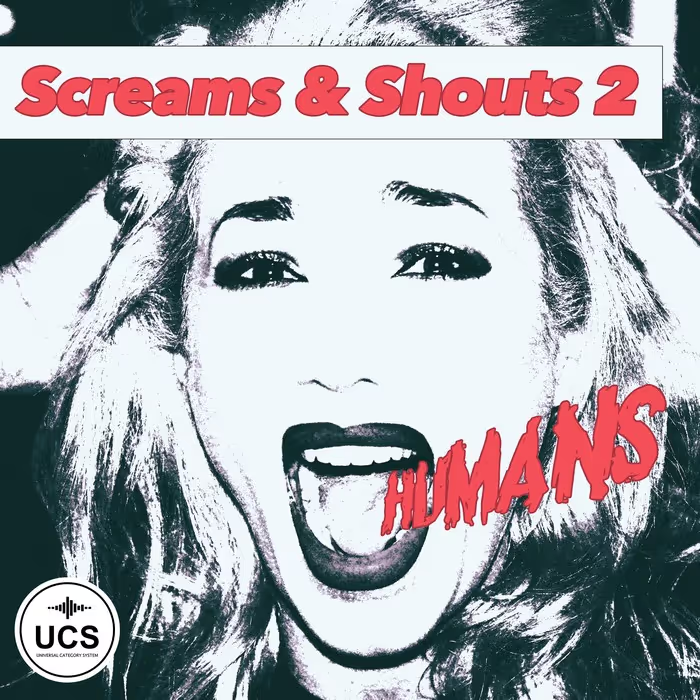Enter the book giveaway • Pre-order the book – or keep reading to get the story behind the book
Q: What were your main motivations for writing Game Audio Mixing: Insights to Improve Your Mixing Performance?
A: Mixing for games is one of my favorite topics within game audio, and I consider it to be of great importance. One of my main motivations behind writing the book was knowledge sharing. Although there are resources available on linear mixing techniques, I believe there is a lack of specific content tailored to video game mixing. While game audio books usually include a chapter on mixing, they often provide high-level examples. Therefore, with “Game Audio Mixing: Insights to Improve Your Mixing Performance”, I aimed to delve deeper into this topic. My core idea throughout the book was to create a resource that game audio professionals could keep on their desks and refer to for inspiration during their work.
While audio is increasingly being recognized in the game industry compared to a decade or two ago, it often primarily focuses on music, voice, and sound design. Mixing, however, is equally important and should be regarded as a crucial aspect of our industry
Another motivation was to raise awareness about the significance of mixing in game development. While audio is increasingly being recognized in the game industry compared to a decade or two ago, it often primarily focuses on music, voice, and sound design. Mixing, however, is equally important and should be regarded as a crucial aspect of our industry. I hope this book will help to emphasize the need for hiring individuals with the right mixing skillsets, establishing positions such as “mixing supervisor”, and adequately planning for mixing in terms of resources, time, and budgets.
Q: This being your first book, what’s the story behind it? How did you end up writing it?
A: To be honest, writing a book was never part of my initial plans. As I mentioned earlier, mixing is a topic that I’m truly passionate about. Whenever I engage in conversations with other audio or game audio professionals, the subject of mixing games naturally arises. During these discussions, particularly with individuals working in the game or movie industries, I realized that mixing games was a topic that sparked interest. I found myself being approached by people seeking advice or best practices in this area. It seemed that there was a lack of information available, and mixing games was often regarded as a mysterious art because there were very few resources in the form of books or publications. Whenever someone had a question about mixing games, I made a habit of jotting it down in my smartphone.
During my summer vacation 2021, I reflected on my own journey when I started mixing games around 10 to 15 years ago. At that time, information sharing was much less prevalent, social media and hashtags like #gameaudio were not yet established. There was no information available, and aspiring game audio mixers had to rely on trial and error,and analyze the work of others to learn. Initially, my intention was to write a few blog posts or social media updates to raise awareness about the intricacies of game mixing and shed some light on this crucial aspect of our industry. So, I began drafting game mixing tips and tricks.
One day, when I was struggling to find inspiration, I decided to call one of my best friends instead of writing. In our conversation, he simply said, “Well, I think you’re writing a book.” His words resonated with me, and suddenly, I saw the potential for turning my accumulated notes into something more substantial
I delved into my own work, reflecting on my mixing successes and failures. Gradually, the collection of tips and tricks grew from a few pages to 40, 50, 60 pages, and beyond. I realized the extensive amount of valuable information I had gathered, and I recognized its potential value for individuals interested in this specific topic.
One day, when I was struggling to find inspiration, I decided to call one of my best friends instead of writing. In our conversation, he simply said, “Well, I think you’re writing a book.” His words resonated with me, and suddenly, I saw the potential for turning my accumulated notes into something more substantial. Encouraged by this idea, I reached out to a few publishers to gauge their interest. Fortunately, the first publisher I approached, Focal Press/Routledge, showed genuine interest and provided guidance and support throughout the manuscript and production processes. Their enthusiasm served as the spark I needed to continue pushing forward with the writing process. Gradually, the tips and tricks evolved into “insights,” and I found myself no longer writing social media posts or blogs but rather crafting a book manuscript in collaboration with a publisher.
That’s the story of how I unexpectedly embarked on the journey of writing this book. So it was kind of a fortuitous progression from jotting down notes on my smartphone to somehow becoming an ‘author’, with the support of a publisher who recognized the value and significance of the topic.
Here are your chances to win the book!
Enter below in as many ways as you like – best of luck!
Q: What does the book cover?
A:The book covers a wide range of topics related to game audio mixing. It starts with delving into some psychological and philosophical concepts. It explores the mental processes and unconscious phenomena that impact the quality and consistency of game mixing. That first chapter covers topics such as setting mixing routines, goals, enhancing concentration, reaching a flow state, building self-confidence, and more.
The book then emphasizes the importance of strategic planning in game mixing. Things like creating a vision, setting objectives, defining necessary resources, and prioritizing goals to deliver a well-crafted mix on time and within budget. It highlights the significance of treating mixing as a core discipline in game audio.
The third chapter explores fundamental considerations and techniques for game audio mixing. It covers the collaborative nature of game mixing and the involvement of the entire audio team in supporting the mix “owner’. It provides insights for all members of the audio team to contribute effectively to the mix.
After that, the book explores different approaches to setup a mix bus structure, which is all about focusing on organizing and structuring the mix bus for better control throughout the game development process. It covers best practices for categorizing sounds into groups and sub-groups, facilitating control over large amounts of content simultaneously, and emphasizes the importance of early bus structure setup for a flexible and creative mix.
Chapter 5 is one of the utmost importance: sounds prioritization. It explores the challenges of balancing and prioritizing sounds in a game mix, discussing techniques for designing a priority scheme, defining focal points, and determining what sounds need to play in different game contexts. It provides considerations to avoid sensory overload and maintain player engagement.
The next two chapters of the book provide insights to deal with the management of frequency spectrum and dynamics in a game mix. It covers equalization and compression application in various stages (baked on contents, rendered in the audio engine, or used at runtime). It highlights how these tools can add clarity, focus, and impact to the mix.
Chapter 8 explores the role of acoustic effects in creating a believable and emotionally impactful soundscape. It includes insights to define strategies and creative goals for acoustic rendering, including enhancing the spatial experience and attaching emotions to specific locations or moments in the game. It addresses the challenges of maintaining clarity and precision while using acoustic effects.
Chapter 9 is about positioning sounds in space, providing insights on controlling focus, spatial information, and perspective in a game mix.
It covers techniques such as volume ‘automation’, equalization, dynamics, panning accuracy, and acoustics modulation to position sonic elements in the virtual space. It emphasizes the importance of readability and delivering clear spatial information while serving the emotional and contextual needs of the game.
The book then explores the process of mastering audio specifically for games. It discusses similarities and differences compared to mastering for other media formats, and covers techniques for ensuring consistency across different playback devices and platforms.
Finally, the last chapter of the book explores how game audio mixing techniques can be used to improve accessibility. It covers the importance of providing options for players to modify the soundscape based on their preferences or accessibility needs. It also provides insights and strategies for designing mix-related accessibility options to cater to a wider audience.
I feel that these chapters collectively should provide a comprehensive guide to game audio mixing, covering both technical and creative aspects.
Q: Is there a specific concept or editorial direction to the book?
A: The book takes a unique approach to its structure and editorial direction. Rather than following a traditional format, it is organized around insights, with each chapter delving into specific topics related to game mixing. The aim is to provide concise and valuable information that audio professionals can easily reference based on their needs.
To add depth and perspective to these insights, the book includes interviews with experienced and talented audio professionals. These interviews feature industry experts such as Ben Minto, Adele Cutting, Tim Nielsen, Brad Meyer, Gordon Durity, Martin Stig Andersen, Rob Krekel, and Loic Couthier. By incorporating their perspectives and expertise, the book presents a broader range of ideas and approaches to game audio mixing.
To add depth and perspective to these insights, the book includes interviews with experienced and talented audio professionals. These interviews feature industry experts such as Ben Minto, Adele Cutting, Tim Nielsen, Brad Meyer, Gordon Durity, Martin Stig Andersen, Rob Krekel, and Loic Couthier
Throughout the book, quotes from these interviews are interspersed with my insights, offering different viewpoints and showcasing the diverse approaches that can be taken. The goal being to highlight that there is often more than one way to achieve a particular outcome in game audio, and also to encourage readers to explore different solutions to different situations or challenges.
Overall, the book’s structure, concept, and editorial direction aim to provide practical and varied insights from industry professionals, allowing readers to expand their understanding of game audio mixing, and find approaches that best suit their needs and preferences.
Pre-order the book here (and save 20% with the coupon code AFL02):
If you want to get Game Audio Mixing: Insights to Improve Your Mixing Performance, you can pre-order it right here (bonus: use the coupon code AFL02 to get 20% off).
Q: Is there any specific target audience?
A: Game Audio Mixing: Insights to Improve Your Mixing Performance is caters to individuals with varying levels of experience in the field. The book is intended both for game audio professionals, other audio professionals, and advanced learners. There are also valuable information for other game developers, such as designers, producers, project managers, etc.
For newcomers to game audio, the book serves as a valuable resource to enhance their skills and understanding of game audio design and mixing. It covers general topics related to game audio, providing a solid foundation for beginners.
Experienced game audio professionals will find the book to be a helpful companion that offers functional and inspirational insights. It serves as a reference guide during their game audio development and mixing projects, providing valuable tips and techniques to improve their workflow and achieve high-quality results.
Additionally, advanced learners interested in game audio mixing can benefit from the book. It provides in-depth knowledge and practical guidance on the intricacies of mixing for games, allowing them to further expand their skills and expertise in this specific area.
I believe the book caters to a diverse audience, including newcomers, experienced professionals, and advanced learners, providing valuable insights and references to enhance their game audio mixing capabilities.
About Alex Riviere:
 Alex Riviere is an audio director, music director, and mixing supervisor with more than 20 years of experience in audio. Alex has worn multiple hats in his career, including: sound supervisor, music supervisor, sound designer, music designer, voice designer, mixing engineer, music producer, and audio localization project manager. His work can be heard on many well known franchises, from console action-adventure open-world AAA games, to PC massive multi-player games, virtual reality games, as well as mobile titles.
Alex Riviere is an audio director, music director, and mixing supervisor with more than 20 years of experience in audio. Alex has worn multiple hats in his career, including: sound supervisor, music supervisor, sound designer, music designer, voice designer, mixing engineer, music producer, and audio localization project manager. His work can be heard on many well known franchises, from console action-adventure open-world AAA games, to PC massive multi-player games, virtual reality games, as well as mobile titles.








